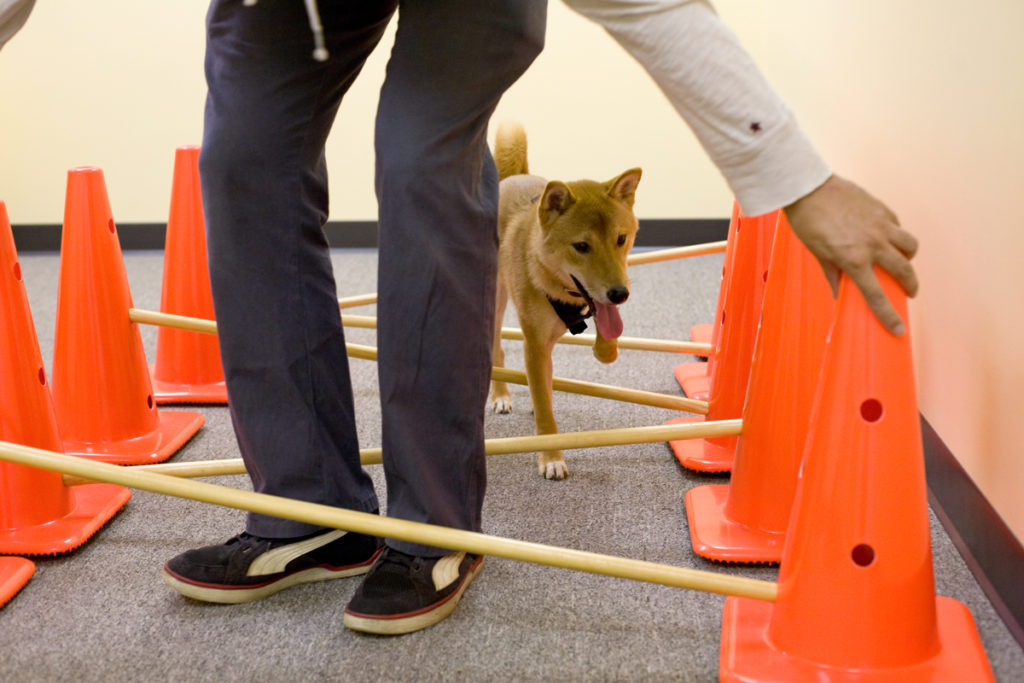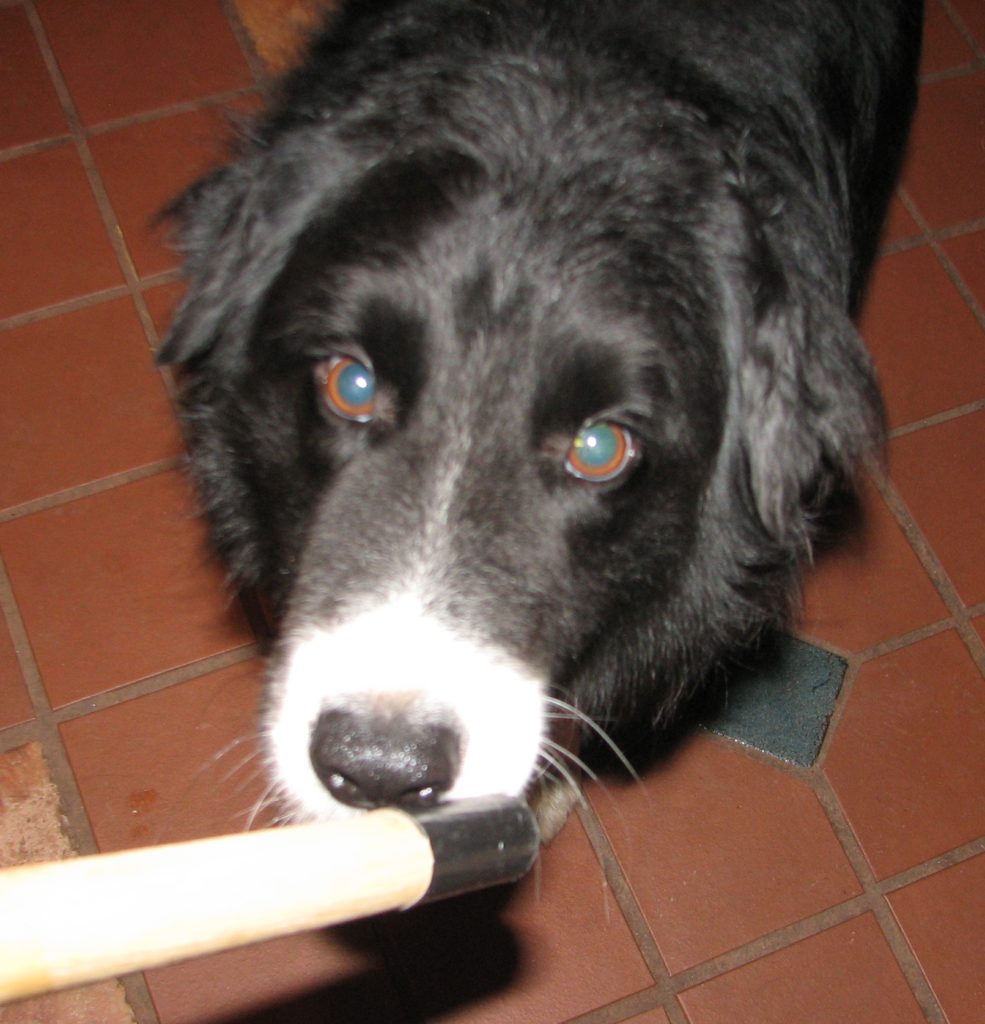
We can help a fearful dog learn how to perceive the people, sounds, objects or situations a positive way. We use classical conditioning to create new, positive associations with whatever scares them. Most often this is done using food. Really good food. We use food in training to teach dogs to do different behaviors or tricks, and we also use food to help the dog feel good about things they are exposed to.
Eileen Anderson has created a list of resources to help with your understanding of gradual exposure (desensitization) and counterconditioning. Trainer Randi Rossman has created this great page that highlights one of my clients conditioning her dog to the appearance of a piece of equipment that will be used by a vet.
By teaching a dog to perform a behavior, using positive reinforcement, in a situation in which the dog is fearful, trainers can help them to begin to change their association with the thing or situation they fear. We take advantage of the good feelings generated when training using rewards.
Play is a great way to help fearful dogs. Many people with fearful dogs will say their dog does not or will not play. Here’s a helpful article by Susan Garrett on How to Create a Motivating Toy.

Hand targeting is a behavior that when learned by a dog allows a trainer to initiate a chain of other behaviors. A dog trained to hand target can be recalled and rewarded. This is a good way to start training a fearful dog to move toward you without being afraid. We can use an object for them to target as well as, or instead of, our hand.
For easier reading and more information about living and working with a fearful dog you can purchase a copy of A Guide To Living With & Training A Fearful Dog. For an even more complete understanding of how to help fearful dogs consider this online course.
Keep reading.
